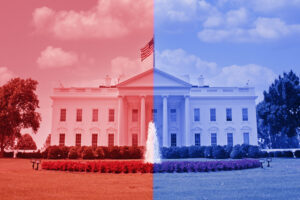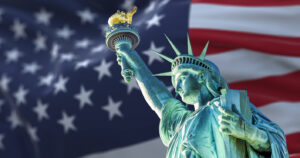If you have ignored or had doubts about whether the concern that democracy is in danger in America, just look at the growing movement to ban books in our schools and libraries.
There is a history of books being banned in the United States for their subject matter and content. Most notably during the colonial era, slavery and the Civil War, the Jim Crow era, and during the 19th century when religious movements and fights against immorality reached a fever pitch.
Smaller efforts have also occurred in the mid-20th century during the “Red Scare” of the McCarthy era.
In 1982, the Supreme Court weighed in on the issue of students right to read when they ruled on a case in New York brought by students when their school board banned books it deemed anti-American, anti-Christian or in other ways thought objectionable.
The Supreme Court explicitly ruled: “Local school boards may not remove books from school libraries simply because they dislike the ideas contained in those books,” …, citing students’ First Amendment rights.”
The ruling inspired the American Library Association (ALA) to establish an annual celebration of “Banned Books Week” where librarians, teachers, publishers and readers get together to support the freedom to find information and express views.
During this annual celebration, the ALA puts together an annual lists of books that have been challenged or banned. Banned Books Week 2022 was just held last week.
The real question is, why the unprecedented support now for banning certain books?
Haven’t we learned anything from past efforts to ban books? Many of the books once banned are readily available for age-appropriate audiences. Many are considered classics.
Examples include Huckleberry Finn, The Catcher in the Rye, To Kill a Mockingbird, The Canterbury Tales, The Color Purple, Harry Potter.
There are many others.
Furthermore, for decades and across generations, there has been vigilance, rules and regulations in managing and monitoring age-appropriate access in many areas whether operating a motor vehicle, buying alcohol, going to bars or viewing PG, R or X-rated movies.
The same has been true and continues to be when it comes to regulations and monitoring around access to age-appropriate books both contemporary and classical literature. The majority of books are categorized and marketed for target audiences: children, adolescents, teens, young adults, adults, seniors.
So, have you paused to think about why we are seeing a growing movement of banning book in America in the 21st century? Have you given any consideration to the types of books being banned?
For a country that values and boasts about freedom of speech and the press as outlined in the First Amendment, are we now willing to turn a blind eye to the unprecedented increase in book banning.
One could argue that, during the intermittent bans over 200 years, the focus and subject areas have not changed: Books about race, sexuality, religion and politics.
There are just different targets.
When it comes to race, the growing craze is to ban books in high schools and libraries that promote so-called “Critical Race Theory,” whether those books actually do or not.
One could legitimately ask: Is this a ruse or excuse?
First we need to understand what “Critical Race Theory” is and is not.
“Critical Race Theory” is defined as a specific academic course that is taught in college or law school, and the focus is to examine systemic racial and cultural biases that exist in American society. It is not a general heading to promote a curriculum about race.
More importantly, there is no evidence that “Critical Race Theory” is being taught in any high school in the country.
When it comes to sexuality, any books addressing LGBTQ issues or featuring LGBTQ characters are targeted to be banned. According to a report from PEN America, these books constitute the highest percentage — 41%, of books targeted in 2021.
What is expected to be gained by banning books in subject areas or about growing social trends that we harbor fears about or disagree with?
Banning books does not erase any historical or contemporaneous facts.
Just as importantly, there is no guarantee that the people we are seeking to keep from reading those book will not find a way to do so if they want to, especially as they come of age.
Isn’t it a better alternative to have an educational and enlightening conversation about all those issues we find concerning or uncomfortable?
As parents, teachers, librarians and concerned citizens, is educating our children about all aspects of American history and contemporary society the better alternative to censorship?
For a country that values and boasts about freedom of speech and the press as outlined in the First Amendment, are we now willing to turn a blind eye to the unprecedented increase in book banning?
Book banning is considered to be the most widespread form of censorship.
Where is the outcry?
Don’t we care as much about the threats to the First Amendment as we seem to care about the Second? Do we care more about the right to own guns than the right to express ideas, write about and discuss real issues among us honestly in the most appropriate way to create awareness and find solutions?
An educated citizenry is the foundation to a healthy and resilient democratic republic.
Growing acceptance of book banning in America in the 21st century. Who would have ever thought it?
Our stories may be republished online or in print under Creative Commons license CC BY-NC-ND 4.0. We ask that you edit only for style or to shorten, provide proper attribution and link to our website. AP and Getty images may not be republished. Please see our republishing guidelines for use of any other photos and graphics.






Janice Ellis